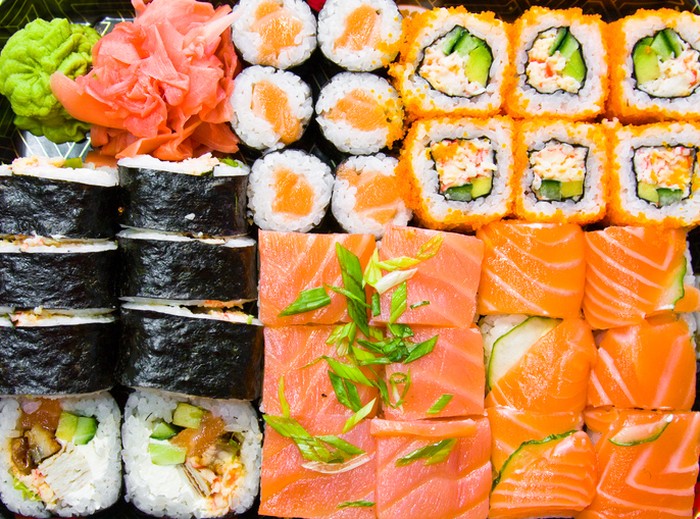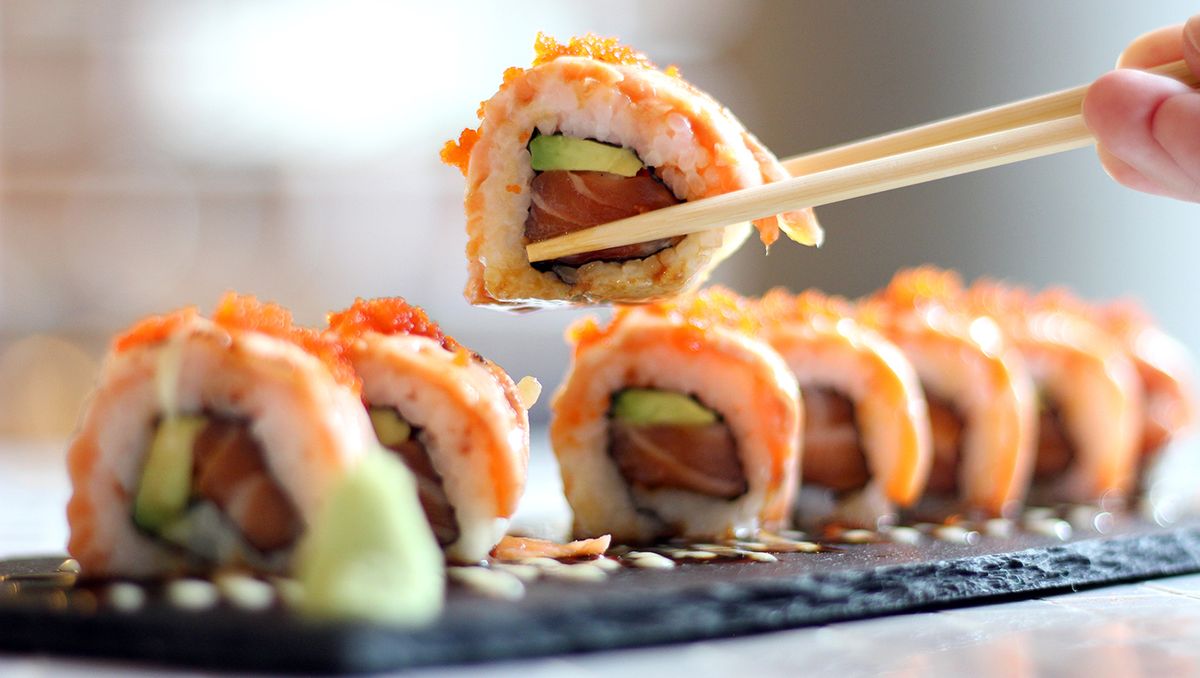Sushi, an exquisite Japanese dish, has captured the hearts and palates of food enthusiasts around the globe. With its precise artistry, delicate flavors, and cultural significance, sushi has become an international culinary sensation. In this article, we delve into the captivating world of sushi, exploring its origins, diverse types, and the artistry behind its creation.
Origins and Evolution

Sushi traces its origins back to ancient Japan, where it was initially created as a method of preserving fish. The concept of using fermented rice to preserve fish eventually evolved into the beloved delicacy we know today. Originally, sushi was consumed as a quick snack, but over time it developed into an art form that combined flavors, textures, and visual appeal.
Ingredients and Techniques
a. Rice: At the heart of every sushi roll is the seasoned sushi rice. Short-grain Japanese rice is meticulously cooked and seasoned with a blend of vinegar, sugar, and salt. The rice is then cooled, allowing it to develop its characteristic stickiness and tangy flavor.
b. Fish and Seafood: Sushi showcases a variety of fish and seafood, each carefully selected for its freshness and quality. From tuna and salmon to shrimp and octopus, sushi presents an array of options to tantalize the taste buds. Sashimi-grade fish is thinly sliced and served raw, while other seafood options may be cooked, marinated, or cured.
c. Nori and Vegetables: Nori, a type of dried seaweed, is commonly used to wrap sushi rolls. It adds a subtle briny flavor and acts as a vessel to hold the ingredients together. Additionally, sushi can be enhanced with a variety of vegetables such as cucumber, avocado, and radish, providing contrasting textures and flavors.
Types of Sushi

a. Nigiri: Nigiri sushi consists of hand-pressed mounds of sushi rice topped with a slice of fish or seafood. It allows the flavors of the fish and rice to shine, creating a harmonious balance of textures and tastes.
b. Maki: Maki sushi refers to the classic sushi rolls, where a layer of sushi rice is spread on a sheet of nori, filled with a combination of fish, vegetables, and condiments, and rolled tightly using a bamboo mat. The rolls are then sliced into bite-sized pieces.
c. Temaki: Temaki, or hand rolls, are cone-shaped sushi creations. A sheet of nori is filled with sushi rice, fish, vegetables, and condiments, and rolled into a cone shape, resembling an ice cream cone. Temaki is often eaten immediately after being made, preserving the crispness of the nori.
Read More : The Best Places to Stay in Mount Fuji: Your Ultimate Guide
The Art of Sushi Making
Sushi making is an art that requires precision, skill, and attention to detail. Sushi chefs, known as Itamae, undergo years of training to master the techniques and traditions of sushi preparation. From selecting the freshest ingredients to the precise knife cuts and aesthetically pleasing presentation, every aspect is carefully considered to create an extraordinary dining experience.
Cultural Significance
Sushi holds deep cultural significance in Japan. It is not just a meal but a representation of the country’s heritage and culinary excellence. Traditional sushi bars, known as sushi-ya, are places of reverence where diners can witness the craftsmanship of sushi chefs and appreciate the rich cultural traditions associated with this iconic dish.
Sushi’s journey from its humble origins in Japan to its global popularity is a testament to its unmatched appeal. With its delicate balance of flavors, meticulous preparation, and cultural significance, sushi continues to captivate and inspire food lovers worldwide. Whether you’re savoring
